-
EXECUTIVE SUMMARY
-
MARKET INTRODUCTION
-
Market Definition
-
Scope of the Study
- Research Objectives
- Assumptions
-
& Limitations
-
2.3.
-
Market Structure
-
3.
-
MARKET RESEARCH METHODOLOGY
-
Research Process
-
Secondary Research
-
Primary Research
-
Forecast Model
-
MARKET LANDSCAPE
-
Supply Chain Analysis
- Raw Technology Suppliers
- Manufacturers/Producers
- Distributors,
- End-users
-
Retailers, and Wholesalers
-
Porter’s Five Forces Analysis
- Threat of New Entrants
- Bargaining Power of Buyers
- Bargaining Power of Suppliers
- Threat of Substitutes
- Internal Rivalry
-
Impact of COVID-19
-
on Global Structural Health Monitoring Market
-
MARKET DYNAMICS OF THE GLOBAL STRUCTURAL HEALTH
-
MONITORING MARKET
-
5.1.
-
Introduction
-
5.2.
-
Drivers
-
5.3.
-
Restraints
-
5.4.
-
Opportunities
-
5.5.
-
Challenges
-
6.
-
GLOBAL STRUCTURAL HEALTH MONITORING MARKET, BY OFFERING
-
Introduction
-
Hardware
- Market Estimates & Forecast, 2020-2030
- Market Estimates
-
& Forecast, by region, 2020-2030
-
Software & Services
- Market Estimates & Forecast, 2020-2030
- Market Estimates
-
& Forecast, by Region, 2020-2030
-
GLOBAL STRUCTURAL HEALTH MONITORING MARKET, BY TECHNOLOGY
-
Introduction
-
Wired
- Market Estimates
- Market Estimates & Forecast, by Region, 2020-2030
-
& Forecast, 2020-2030
-
Wireless
- Market Estimates
- Market Estimates & Forecast, by Region, 2020-2030
-
& Forecast, 2020-2030
-
GLOBAL STRUCTURAL
-
HEALTH MONITORING MARKET, BY END-USE
-
Introduction
-
Civil Infrastructure
- Market Estimates & Forecast, 2020-2030
- Market Estimates
-
& Forecast, by Region, 2020-2030
-
Aerospace & Defense
- Market Estimates & Forecast, 2020-2030
- Market Estimates
-
& Forecast, by Region, 2020-2030
-
Energy
- Market Estimates & Forecast, 2020-2030
- Market Estimates
-
& Forecast, by Region, 2020-2030
-
Mining
- Market Estimates & Forecast, 2020-2030
- Market Estimates
-
& Forecast, by Region, 2020-2030
-
Others
- Market Estimates & Forecast, 2020-2030
- Market Estimates
-
& Forecast, by Region, 2020-2030
-
GLOBAL STRUCTURAL HEALTH MONITORING MARKET, BY REGION
-
Introduction
-
North America
- Market Estimates
- Market Estimates & Forecast, by Offering, 2020-2030
- Market Estimates
- Market Estimates & Forecast, by End-use, 2020-2030
- Market Estimates
- US
- Canada
-
& Forecast, 2020-2030
-
& Forecast, by Technology, 2020-2030
-
& Forecast, by Country, 2020-2030
-
& Forecast, by Technology, 2020-2030
-
& Forecast, by Offering, 2020-2030
-
9.2.7.3.
-
Market Estimates & Forecast, by End-use, 2020-2030
-
Europe
- Market Estimates & Forecast, 2020-2030
- Market Estimates
- Market Estimates & Forecast, by Technology, 2020-2030
- Market Estimates
- Market Estimates & Forecast, by Country, 2020-2030
- Germany
-
& Forecast, by Offering, 2020-2030
-
& Forecast, by End-use, 2020-2030
-
& Forecast, by Offering, 2020-2030
-
9.3.6.3.
-
Market Estimates & Forecast, by End-use, 2020-2030
-
& Forecast, by Technology, 2020-2030
-
& Forecast, by Offering, 2020-2030
-
9.3.8.3.
-
UK
-
Market Estimates & Forecast, by Offering, 2020-2030
-
Market Estimates
-
Market Estimates & Forecast, by End-use, 2020-2030
-
France
-
Market Estimates
-
Market Estimates & Forecast, by Technology,
-
Market Estimates & Forecast, by End-use, 2020-2030
-
9.3.9.2.
-
Spain
-
Market Estimates & Forecast, by Offering,
-
Market Estimates & Forecast, by Technology, 2020-2030
-
9.3.10.
-
Italy
-
9.3.10.1.
-
Market Estimates & Forecast, by End-use,
-
Market Estimates & Forecast, by Offering, 2020-2030
-
9.3.10.3.
-
Market Estimates & Forecast, by Technology,
-
Market Estimates & Forecast, by End-use, 2020-2030
-
9.3.11.2.
-
Rest of Europe
-
Market Estimates & Forecast, by Offering,
-
Market Estimates & Forecast, by Technology, 2020-2030
-
9.4.
-
Asia-Pacific
-
9.4.1.
-
Market Estimates & Forecast, 2020-2030
-
9.4.3.
-
Market Estimates & Forecast, by End-use,
-
Market Estimates & Forecast, by Offering,
-
Market Estimates & Forecast, by Technology, 2020-2030
-
9.4.5.
-
Market Estimates & Forecast, by End-use,
-
Market Estimates & Forecast, by Country, 2020-2030
-
9.4.6.2.
-
China
-
Market Estimates & Forecast, by Offering,
-
Market Estimates & Forecast, by Technology, 2020-2030
-
9.4.7.
-
Japan
-
9.4.7.1.
-
Market Estimates & Forecast, by End-use,
-
Market Estimates & Forecast, by Offering, 2020-2030
-
9.4.7.3.
-
Market Estimates & Forecast, by Technology,
-
Market Estimates & Forecast, by End-use, 2020-2030
-
9.4.8.2.
-
India
-
Market Estimates & Forecast, by Offering,
-
Market Estimates & Forecast, by Technology, 2020-2030
-
9.4.9.
-
Australia & New Zealand
-
& Forecast, by Technology, 2020-2030
-
& Forecast, by Offering, 2020-2030
-
9.4.10.3.
-
Market Estimates & Forecast, by End-use,
-
Market Estimates & Forecast, by Offering, 2020-2030
-
Market Estimates
-
Market Estimates & Forecast, by End-use, 2020-2030
-
Rest of Asia-Pacific
-
Market Estimates
-
Market Estimates & Forecast, by Technology,
-
Market Estimates & Forecast, by End-use, 2020-2030
-
Rest of the World
- Market Estimates & Forecast, 2020-2030
- Market Estimates
- Market Estimates & Forecast, by Technology, 2020-2030
- Market Estimates
- Market Estimates & Forecast, by Region, 2020-2030
- South America
-
& Forecast, by Offering, 2020-2030
-
& Forecast, by End-use, 2020-2030
-
& Forecast, by Offering, 2020-2030
-
9.5.6.3.
-
Market Estimates & Forecast, by End-use, 2020-2030
-
9.5.7.2.
-
Middle East
-
Market Estimates & Forecast, by Offering,
-
Market Estimates & Forecast, by Technology, 2020-2030
-
9.5.8.
-
Africa
-
9.5.8.1.
-
Market Estimates & Forecast, by End-use,
-
Market Estimates & Forecast, by Offering, 2020-2030
-
9.5.8.3.
-
Market Estimates & Forecast, by Technology,
-
Market Estimates & Forecast, by End-use, 2020-2030
-
COMPETITIVE LANDSCAPE
-
Introduction
-
Market Strategy
-
Key Development Analysis
-
(Expansions/Mergers & Acquisitions/Joint
-
Ventures/New Service Developments/Agreements/Investments)
-
COMPANY PROFILES
-
Nova Metrix LLC
- Company Overview
- Financial Updates
- Business Segment Overview
- Strategies
- Key Developments
- SWOT Analysis
-
Geokon
- Company Overview
- Financial Updates
- Business Segment
- Strategies
- Key Developments
- SWOT Analysis
-
Overview
-
11.2.4.
-
Strategies
-
11.2.5.
-
Key Developments
-
11.2.6.
-
SWOT Analysis
-
11.3.
-
Campbell Scientific
-
11.3.1.
-
Company Overview
-
11.3.2.
-
Financial Updates
-
11.3.3.
-
Business Segment Overview
-
COWI
- Company Overview
- Financial Updates
- Business Segment Overview
- Strategies
- Key Developments
- SWOT Analysis
-
Geocomp
- Company Overview
- Financial Updates
- Business Segment
- Strategies
- Key Developments
- SWOT Analysis
-
Overview
-
11.5.4.
-
Strategies
-
11.5.5.
-
Key Developments
-
11.5.6.
-
SWOT Analysis
-
11.6.
-
Acellent Technologies
-
11.6.1.
-
Company Overview
-
11.6.2.
-
Financial Updates
-
11.6.3.
-
Business Segment Overview
-
Sixense
- Company Overview
- Financial Updates
- Business Segment Overview
- Strategies
- Key Developments
- SWOT Analysis
-
Pure Technologies
- Company Overview
- Financial Updates
- Business Segment
- Company Overview
- Financial Updates
- Business Segment Overview
- Strategies
- Key Developments
- SWOT Analysis
-
Overview
-
11.8.4.
-
Strategies
-
11.8.5.
-
Key Developments
-
11.8.6.
-
SWOT Analysis
-
11.9.
-
Structural Monitoring Systems
-
SGS
- Company Overview
- Financial Updates
- Business Segment
- Strategies
- Key Developments
- SWOT Analysis
-
Overview
-
11.10.4.
-
Strategies
-
11.10.5.
-
Key Developments
-
11.10.6.
-
SWOT Analysis
-
11.11.
-
Digitexx
-
11.11.1.
-
Company Overview
-
11.11.2.
-
Financial Updates
-
11.11.3.
-
Business Segment Overview
-
CONCLUSION
-
-
LIST OF TABLES
-
Global Structural Health Monitoring Market,
-
by Region, 2020-2030 (USD Million)
-
Global Structural Health Monitoring Market, by Offering,
-
Global Structural Health Monitoring Market, by Technology,
-
Global Structural Health Monitoring Market, by End-use, 2020-2030
-
(USD Million)
-
TABLE
-
North America: Structural Health Monitoring Market, by Country, 2020-2030 (USD
-
Million)
-
TABLE
-
North America: Structural Health Monitoring Market, by Offering, 2020-2030 (USD
-
Million)
-
TABLE
-
North America: Structural Health Monitoring Market, by Technology, 2020-2030 (USD
-
Million)
-
TABLE
-
North America: Structural Health Monitoring Market, by End-use, 2020-2030 (USD
-
Million)
-
TABLE
-
US: Structural Health Monitoring Market, by Offering, 2020-2030 (USD Million)
-
US:
-
Structural Health Monitoring Market, by Technology, 2020-2030 (USD Million)
-
US: Structural
-
Health Monitoring Market, by End-use, 2020-2030 (USD Million)
-
Canada: Structural Health
-
Monitoring Market, by Offering, 2020-2030 (USD Million)
-
Canada: Structural Health Monitoring Market,
-
by Technology, 2020-2030 (USD Million)
-
Canada: Structural Health Monitoring Market, by
-
End-use, 2020-2030 (USD Million)
-
Europe: Structural Health Monitoring Market, by Country, 2020-2030
-
(USD Million)
-
TABLE
-
Europe: Structural Health Monitoring Market, by Offering, 2020-2030 (USD Million)
-
Europe: Structural
-
Health Monitoring Market, by Technology, 2020-2030 (USD Million)
-
Europe: Structural Health
-
Monitoring Market, by End-use, 2020-2030 (USD Million)
-
Germany: Structural Health Monitoring Market,
-
by Offering, 2020-2030 (USD Million)
-
Germany: Structural Health Monitoring Market, by
-
Technology, 2020-2030 (USD Million)
-
Germany: Structural Health Monitoring Market, by
-
End-use, 2020-2030 (USD Million)
-
France: Structural Health Monitoring Market, by Offering,
-
France: Structural Health Monitoring Market, by Technology,
-
France: Structural Health Monitoring Market, by End-use, 2020-2030
-
(USD Million)
-
TABLE
-
Italy: Structural Health Monitoring Market, by Offering, 2020-2030 (USD Million)
-
Italy:
-
Structural Health Monitoring Market, by Technology, 2020-2030 (USD Million)\
-
Italy: Structural
-
Health Monitoring Market, by End-use, 2020-2030 (USD Million)
-
Spain: Structural Health
-
Monitoring Market, by Offering, 2020-2030 (USD Million)
-
Spain: Structural Health Monitoring Market,
-
by Technology, 2020-2030 (USD Million)
-
Spain: Structural Health Monitoring Market, by
-
End-use, 2020-2030 (USD Million)
-
UK: Structural Health Monitoring Market, by Offering, 2020-2030
-
(USD Million)
-
TABLE
-
UK: Structural Health Monitoring Market, by Technology, 2020-2030 (USD Million)
-
UK: Structural
-
Health Monitoring Market, by End-use, 2020-2030 (USD Million)
-
Rest of Europe: Structural
-
Health Monitoring Market, by Offering, 2020-2030 (USD Million)
-
Rest of Europe: Structural
-
Health Monitoring Market, by Technology, 2020-2030 (USD Million)
-
Rest of Europe: Structural
-
Health Monitoring Market, by End-use, 2020-2030 (USD Million)
-
Asia-Pacific: Structural
-
Health Monitoring Market, by Country, 2020-2030 (USD Million)
-
Asia-Pacific: Structural
-
Health Monitoring Market, by Offering, 2020-2030 (USD Million)
-
Asia-Pacific: Structural
-
Health Monitoring Market, by Technology, 2020-2030 (USD Million)
-
Asia-Pacific: Structural
-
Health Monitoring Market, by End-use, 2020-2030 (USD Million)
-
China: Structural Health
-
Monitoring Market, by Offering, 2020-2030 (USD Million)
-
China: Structural Health Monitoring Market,
-
by Technology, 2020-2030 (USD Million)
-
China: Structural Health Monitoring Market, by
-
End-use, 2020-2030 (USD Million)
-
India: Structural Health Monitoring Market, by Offering, 2020-2030
-
(USD Million)
-
TABLE
-
India: Structural Health Monitoring Market, by Technology, 2020-2030 (USD Million)
-
India:
-
Structural Health Monitoring Market, by End-use, 2020-2030 (USD Million)
-
Japan: Structural
-
Health Monitoring Market, by Offering, 2020-2030 (USD Million)
-
Japan: Structural Health
-
Monitoring Market, by Technology, 2020-2030 (USD Million)
-
Japan: Structural Health Monitoring Market,
-
by End-use, 2020-2030 (USD Million)
-
Australia & New Zealand: Structural Health
-
Monitoring Market, by Offering, 2020-2030 (USD Million)
-
Australia & New Zealand: Structural
-
Health Monitoring Market, by Technology, 2020-2030 (USD Million)
-
Australia & New
-
Zealand: Structural Health Monitoring Market, by End-use, 2020-2030 (USD Million)
-
Rest
-
of Asia-Pacific: Structural Health Monitoring Market, by Offering, 2020-2030 (USD
-
Million)
-
TABLE
-
Rest of Asia-Pacific: Structural Health Monitoring Market, by Technology, 2020-2030
-
(USD Million)
-
TABLE
-
Rest of Asia-Pacific: Structural Health Monitoring Market, by End-use, 2020-2030
-
(USD Million)
-
TABLE
-
Rest of the World (RoW): Structural Health Monitoring Market, by Region, 2020-2030
-
(USD Million)
-
TABLE
-
Rest of the World (RoW): Structural Health Monitoring Market, by Offering, 2020-2030
-
(USD Million)
-
TABLE
-
Rest of the World (RoW): Structural Health Monitoring Market, by Technology,
-
Rest of the World (RoW): Structural Health Monitoring Market,
-
by End-use, 2020-2030 (USD Million)
-
South America: Structural Health Monitoring Market,
-
by Offering, 2020-2030 (USD Million)
-
South America: Structural Health Monitoring Market,
-
by Technology, 2020-2030 (USD Million)
-
South America: Structural Health Monitoring Market,
-
by End-use, 2020-2030 (USD Million)
-
Middle East: Structural Health Monitoring Market,
-
by Offering, 2020-2030 (USD Million)
-
Middle East: Structural Health Monitoring Market,
-
by Technology, 2020-2030 (USD Million)
-
Middle East: Structural Health Monitoring Market,
-
by End-use, 2020-2030 (USD Million)
-
Africa: Structural Health Monitoring Market, by
-
Offering, 2020-2030 (USD Million)
-
Africa: Structural Health Monitoring Market, by
-
Technology, 2020-2030 (USD Million)
-
Africa: Structural Health Monitoring Market, by
-
End-use, 2020-2030 (USD Million)
-
LIST OF FIGURES
-
Global Structural Health
-
Monitoring Market Segmentation
-
Research Methodology
-
Five Forces Analysis of the Global Structural
-
Health Monitoring Market
-
Value Chain of the Global Structural Health Monitoring Market
-
Share of the
-
Global Structural Health Monitoring Market in 2021, by Country (%)
-
Global Structural Health
-
Monitoring Market, by Region, 2020-2030
-
Global Structural Health Monitoring Market Share,
-
by Offering, 2021 (%)
-
FIGURE
-
Global Structural Health Monitoring Market, by Offering, 2020-2030
-
Global Structural Health
-
Monitoring Market Share, by Technology, 2021 (%)
-
Global Structural Health Monitoring Market,
-
by Technology, 2020-2030
-
Global Structural Health Monitoring Market Share, by End-use,
-
FIGURE
-
Global Structural Health Monitoring Market, by End-use, 2020-2030

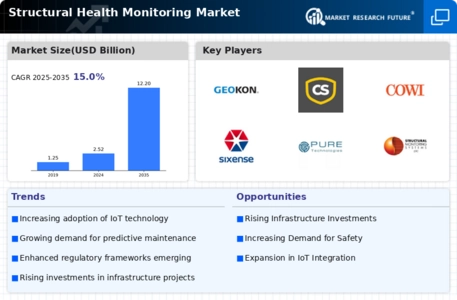
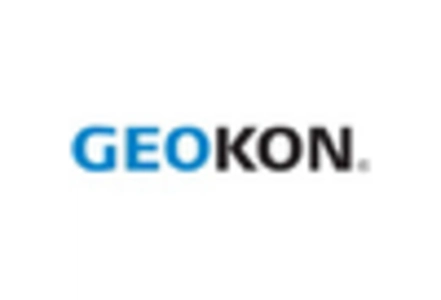



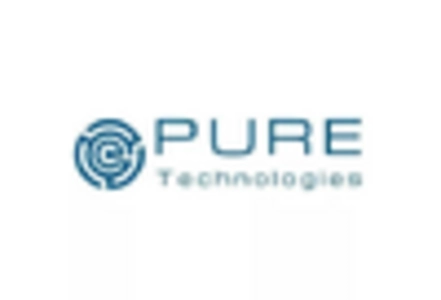
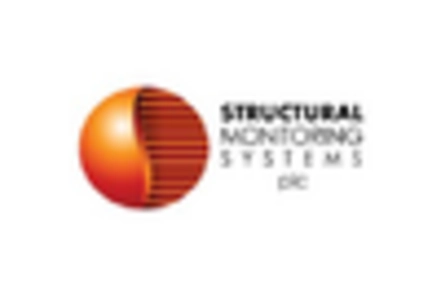
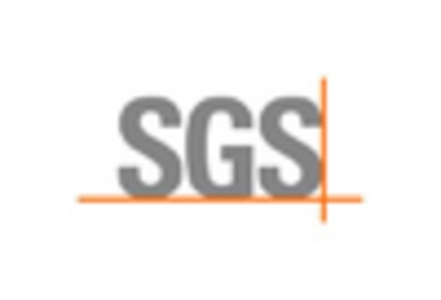

Leave a Comment